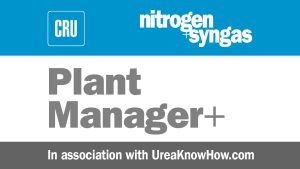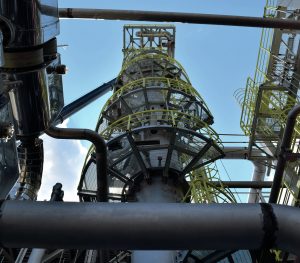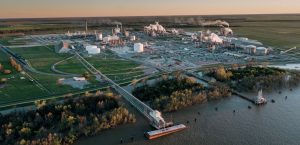
Market Outlook
Ammonia prices are expected to remain soft moving through January into February, with little in the way of price support from both a supply and demand perspective. January’s Tampa settlement was $100/t down on December at $525/t CFR.

Ammonia prices are expected to remain soft moving through January into February, with little in the way of price support from both a supply and demand perspective. January’s Tampa settlement was $100/t down on December at $525/t CFR.

In spite of nearly two years of western sanctions, Russian exports of nitrogen fertilizer have recovered almost to pre-war levels, while high prices led to record earnings in 2022.

Today some 75% of all urea plants worldwide operate a prilling tower as the solidification and finishing technology. A prilling tower is a large hollow concrete tower in which concentrated urea melt is sprayed from the top via a rotating bucket or static shower heads. The urea melt droplets cool and solidify while falling down some 70-100 m. The heat is removed by ambient air flowing upwards either as a natural draft due to the temperature increase or forced by means of air blowers.

The Saudi Arabian Mining Company (Ma’aden) has entered into a partnership with Metso and thyssenkrupp Uhde to develop and license an integrated process to reduce carbon emissions and recycle phosphogypsum in Saudi Arabia. A framework agreement between the three partners was jointly announced on 10th January.

Urea: December began on a positive note with a flurry of Egyptian urea sales and firmer prices for delivery to Brazil. The increase in values was short lived, however, and piecemeal demand in Europe was insufficient to halt the downward trend. By mid-December, buying interest from Brazil had fizzled out, although sellers breathed a sigh of relief when India’s NFL floated a new import tender on 21st December.

Granulation technology generates a premium urea end-product in large volumes capable of withstanding lengthy storage and extreme shipping conditions. Prilling technology, meanwhile, given its typically lower investment cost, can be an attractive option for smaller-scale urea producers supplying local markets. Stamicarbon’s Dr Wilfried Dirkx, Ahmed Shams and Branislav Manic explore the technology options for urea finishing.

New regulatory developments in Europe are focusing attention on eliminating microplastic residues in soils by adopting biodegradable fertilizer coatings. Major technology licensors and engineering companies are also developing new coating technologies for controlled-release fertilizers (CRFs).

More than 700 delegates from 300 companies and 55 countries gathered at the EPIC SANA Lisboa Hotel, Lisbon, Portugal, 17-19 October 2023, for the Argus Fertilizer Europe 2023 conference.

Low demand, high gas prices and cheaper Russian imports of urea and ammonia are keeping a lid on European fertiliser production, prompting fears of permanent plant closures. ICIS’s Deepika Thapliyal, Sylvia Tranganida, and Aura Sabadus examine the challenges faced by the sector and the potential long-term impacts on the European fertilizer industry.

We report on fertilizer production, consumption and pricing in the US market. The country’s fertilizer industry, ranked fourth globally in terms of total production capacity, has grown and developed alongside its increasingly sophisticated domestic agricultural sector.